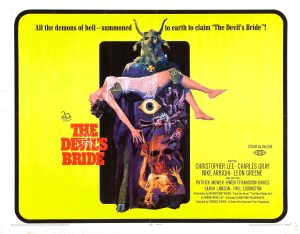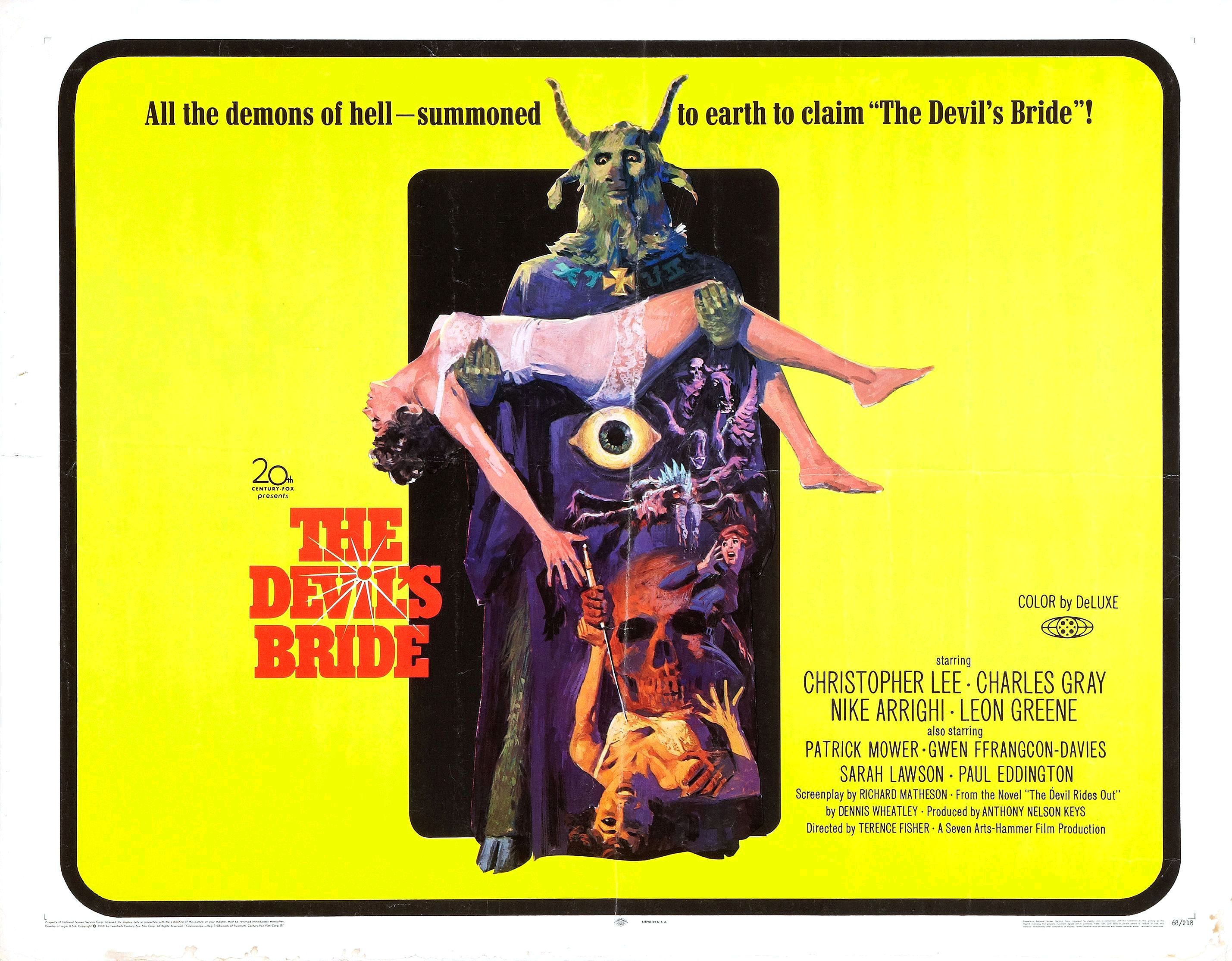
The Devil Rides Out (AKA: The Devil’s Bride) is produced out of Hammer Film Productions. It’s based on the 1934 novel of the same name written by Dennis Wheatley, with Richard Matheson adapting the screenplay. Directed by Terence Fisher, it stars Christopher Lee, Charles Gray, Nike Arrighi, Leon Greene, Patrick Mower, Sarah Lawson and Paul Eddington. Filmed in Technicolor with Arthur Grant the cinematographer and the music is scored by James Bernard.
1930’s England and Duc de Ricleau (Lee) finds that his young friend Simon Aron has gotten himself involved with a Satanic cult led by the evil Mocata (Gray). As the Duc and his friends try to save Simon from the cult, Mocata and his followers summon the forces of evil to aid their cause.
It was meant to come out a bit earlier in the 60’s, but Satanism, an always iffy subject, would have seen censorship strip Hammer’s ideas for the film to the bone. So the studio waited a few more years and finally got the film out a couple of years shy of the 70’s. It’s a film that now, more than ever, is rightly viewed as not only one of the best film’s to have come out of Hammer, but also as one of the best British horror movies ever released. There was much in the film’s favour from the off, it had the studio’s best director in the chair, the charismatic Christopher Lee in the lead and the talented Matheson (I Am Legend/The Shrinking Man/Hell House) writing the screenplay. The latter of which managing to streamline Wheatley’s potent, but long, source material into a fast paced hour and a half movie. It’s also, thanks to Wheatley, well researched, which when finding the story is set in more modern times, gives the film an authentic sheen as it rides on into the macabre.
On the surface the plot seems to be a standard good against evil battle, but it’s not just a battle, this is a war on terror. Lee’s determined, bastion of good, de Ricleau is not just fighting to save the soul of those he cares about, the film makes one feel that it’s a battle he must win: for us all. Tho only blessed with the usual standard Hammer budget, the film has immense attention to detail, the power of black magic and the occult is painted vividly, with Fisher ensuring that nothing is hokey, this is serious stuff. The director, too, favouring atmospheric dread over short sharp shocks. What action there is is quality, sure the effects are hardly Oscar winning fare, but the impact is big. So too are the number of memorable scenes that puncture the story, the centrepiece of which is the night our “good” characters spend in floor drawn pentacle, fighting off the forces of darkness, some suggested trickery and terrifying manifestations testing their resolve, with the majestic Lee holding court with virtuous nobility.
The rest of the cast are uniformly excellent, with stand outs being Gray, excelling at silky villainy, even tho he’s not on screen a great deal, and Eddington, who neatly plays it deadpan opposed to Lee’s serious attempt to drive home the seriousness of what is going on. Noteworthy, too, that it’s one of those rare occasions to see Lee playing the good guy. Grant (The Plague of the Zombies) makes wonderful use of the Technicolor, his lensing for the fire and brimstone finale is particularly memorable, and Bernard’s score is eerie for the build up sequences and demonically boisterous for the critical moments: one of the best scores to accompany a Hammer film. It’s not high cinematic art, and certainly not an overtly horrific film; in that you wouldn’t recommend it to the boo-jump thrill seeker, but it’s troublingly scary, adult and dripping with cold dread. A picture that closes in on you and challenges the myths and nightmares that lurk in the dark.

